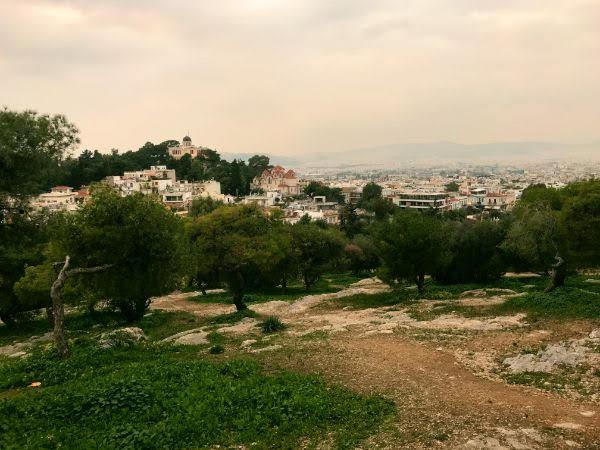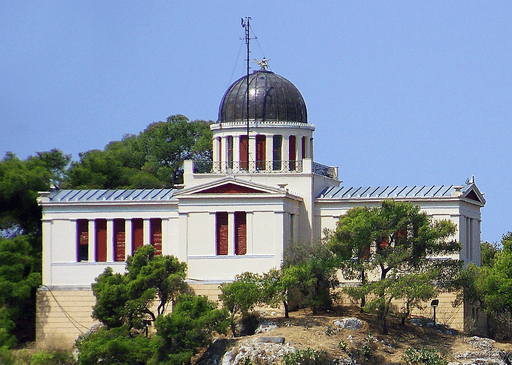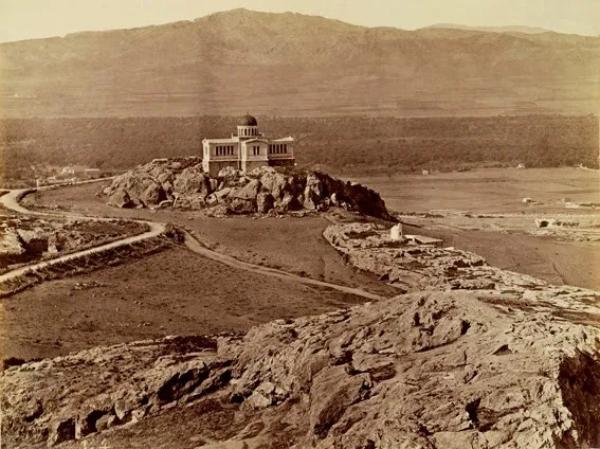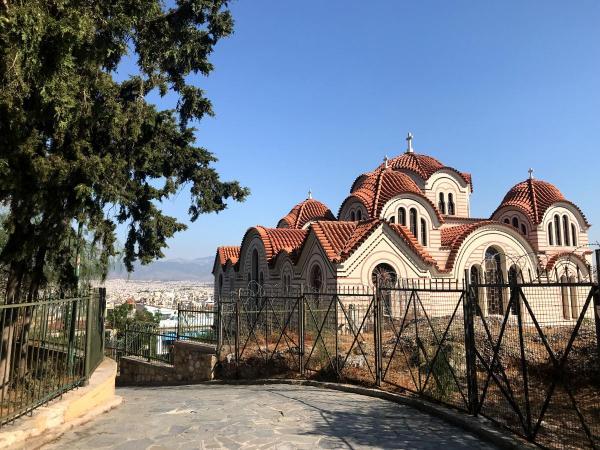The Hill of the Nymphs (or Nymphs Hill) is one of several rocky outcrops in the heart of Athens’ historic center. It forms one large forested area with the adjacent hills of the Pnyx and Philopappos, facing the hills of the Acropolis and Areopagus across the pedestrian-favored street of Apostolou Pavlou. At 105 meters tall, it stands as one of the city’s most notable viewpoints. And combined with the neighboring hills and historical sites, it makes for a lovely addition to a walking itinerary in central Athens.

Affiliation disclosure: By purchasing goods or services via the links contained in this post, I may be earning a small commission from the seller's profit, without you being charged any extra penny. You will be thus greatly helping me to maintain and keep enriching this website. Thanks!
The Hill of the Nymphs took its current name in 1835, when archeologists discovered an inscription dedicating an ancient shrine on the hilltop to the Nypmhs. In Greek mythology, the Nymphs were demigodly, feminine spirits (sort of like fairies) that inhabited beautiful natural spots and guarded the Earth’s vegetation and fertility. Since the 5th century BC, when the Athenian democracy was established, they were worshipped in tandem with the deme (literally the populace) that was then deified.
The Hill of the Nymphs is nowadays crowned by the National Observatory of Athens, which gives the hill its alternative name of Observatory Hill. Designed by Danish architect Theophil Hansen, this emblematic building was completed in 1845 to house the first research center in the Balkans. Befittingly, it stands near the site where the acclaimed ancient astronomer Meton performed his influential work.
Surrounded by a serene garden and a cypress forest, the building today hosts a museum of astrophysics. Among various old instruments and literature, it exhibits the observatory’s original telescope used to draw the time’s most accurate map of the Moon. At the time of writing, the museum opens only for preappointed presentations every Wednesday, Friday, and Saturday evening. Find out more on their website or via e-mail inquiry at [email protected].


The second major structure on the Hill of the Nymphs is the imposing church of Saint Marina, completed in 1927. Two other points of interest are an ancient sanctuary of Zeus at the hill’s eastern foot and a cave at the western foot. The latter is called the Cave of the Evil Sisters and is deemed haunted. Folklore has it that that’s where the plague, cholera, and smallpox emanated from and decimated much of the city’s population in past centuries.

Squeezed on the hill’s eastern slope, lies the charming, tiny neighborhood of Asteroskopeio (literally observatory). Its neoclassical houses hold some of the city’s classiest rentals with a view to the Acropolis. Beyond the hill’s northern and western slopes, spread respectively the neighborhoods of Thissio and Petralona.
The Hill of the Nymphs is best accessed via the Thissio metro station.
Photo Gallery
View (and if you want use) all my photographs from the Hill of the Nymphs.
Accommodation and Activities in Athens
Stay22 is a handy tool that lets you search for and compare stays and experiences across multiple platforms on the same neat, interactive map. Hover over the listings to see the details. Click on the top-right settings icon to adjust your preferences; switch between hotels, experiences, or restaurants; and activate clever map overlays displaying information like transit lines or concentrations of sights. Click on the Show List button for the listings to appear in a list format. Booking via this map, I will be earning a small cut of the platform's profit without you being charged any extra penny. You will be thus greatly helping me to maintain and keep enriching this website. Thanks!
